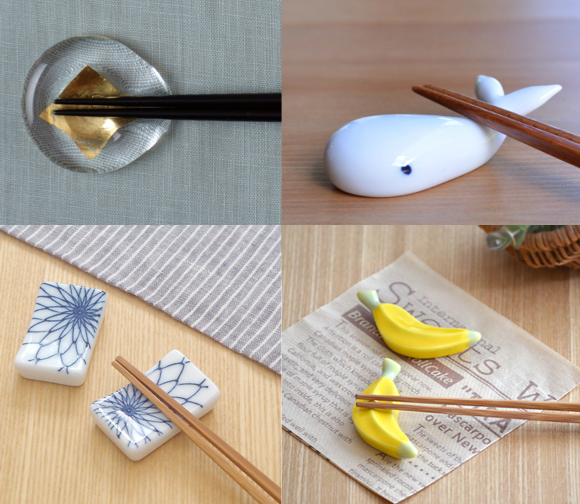
Sitting down to a traditional Japanese meal is made even more special by those little sticks you’ll have to manipulate to get the food to your mouth. However, for fork-loving westerners, using chopsticks, or hashi as they’re called in Japanese, can be downright frustrating when all you want to do is sample the local cuisine, not wear it on your shirt. But while you’re skewering your tempura and twirling your udon (PS – don’t do that), be sure to take a few seconds to appreciate that little tool propping up your hashi. From simple to completely bizarre, there’s a chopstick rest to suit any style in Japan.
A less-essential component of a table setting, chopstick rests are used exactly how you would expect: to rest your chopsticks on so they don’t touch the table. Many restaurants choose to provide customers with wooden chopsticks wrapped in paper, giving diners a fun opportunity to fold their own rest:
But if you’re indulging at a fancier restaurant in Japan, you just might encounter a non-disposable version. Most chopstick rests, or hashioki, are made of ceramic:
But there are some that are made of glass:
And even some that are made of flexible aluminum:
Animals are always a popular theme. Who wouldn’t want to look down and see a cute little critter holding up your chopsticks?:
But there are also plenty of popular characters who are just waiting to help you out:
Some hashioki are simple and stylish:
Others emulate the food you might be eating:
But no matter what you choose to lay your hashi on, just be sure to appreciate the unsung hero of the table. For without a hashioki, the tips of your chopsticks will dirty up your dining area. So rock on, little chopstick rests! We appreciate your efforts!